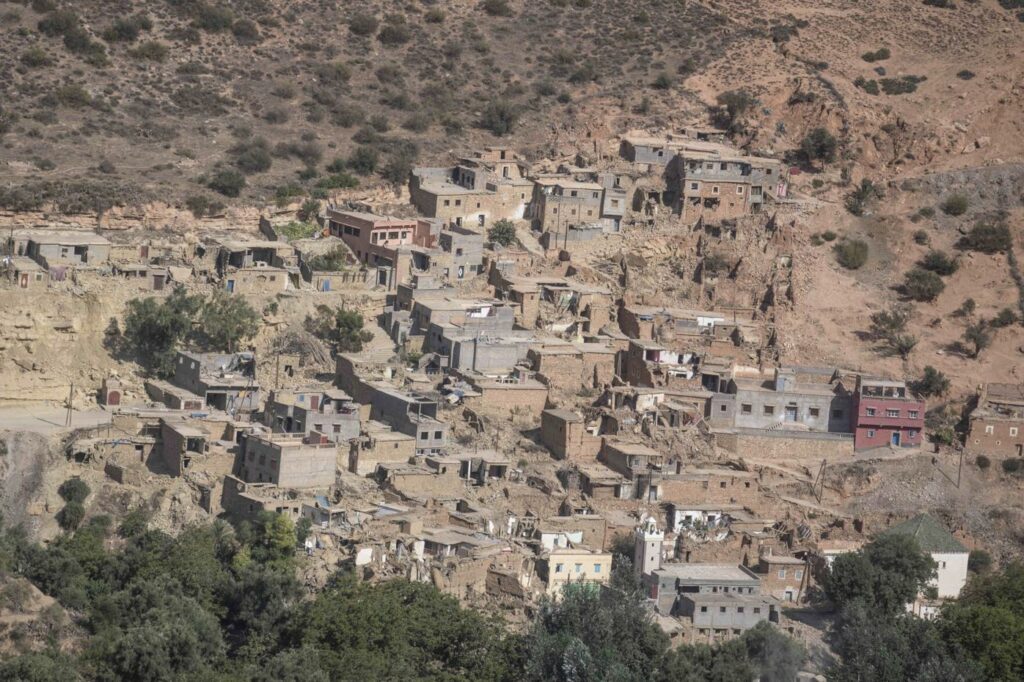One month after a devastating 6.8 magnitude earthquake hit Morocco, rubble still litters villages around the Atlas Mountains. The North African country now faces the challenge of rebuilding and taking measures to make centuries-old Moroccan villages earthquake-proof, at speed, and without sacrificing its traditional architecture.
Read More: Inspiring Change Through Dreams & Heritage – Bisila Bokoko
“We’d prefer the government to rehouse us here in our village because we’ve heard that they’re going to move us a bit further away. We have our land here and our farming too, which we can’t give up. We are committed to our culture here,” said Mohamed El Asri, a resident of the village of Imi N’Tala.
Returning to traditional architecture may, in fact, be part of the answer to the need for greater resilience. In recent years, “often poorly built” concrete construction has displaced traditional earthen and stone buildings in the High Atlas, said Elie Mouyal, another Moroccan architect.
“There are roughly two scenarios. We have large towns with concrete, rather recent architecture. We’ll call them fairly recent buildings that weren’t quite up to standard, but they had the appearance of strength and modernity. These have pretty much collapsed everywhere. It’s a catastrophe. We also have what we call unconventional, vernacular, traditional architecture that has stood up to the test. I’m not saying that they’re intact,” said Salima Naji, architect and anthropologist.
Read More: Dreams Talks Explores Africa’s Aviation Future with Brienze Lawrence
Rabat has announced a budget of 120 billion dirhams ($11.6 billion) over five years to support 4.2 million people affected by the quake. King Mohammed VI stressed the importance of “listening to the local population” and respecting the “unique heritage” and traditions in the region during the reconstruction.
